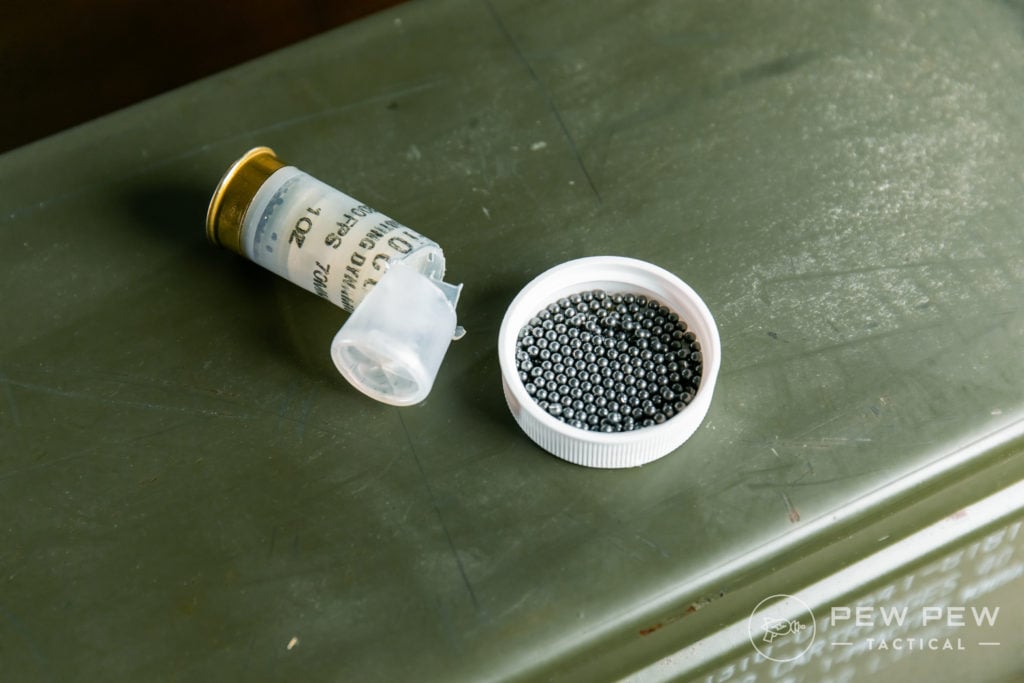
The only place they score high numbers is in recoil, where low numbers are desired. The ballistic coefficient (BC) and sectional density of rifled slugs is pretty pitiful. They are a short range (100 yard or less) proposition at best.

Their effective deer hunting range is limted by their accuracy, but the slug itself is dangerous to other hunters at far greater distances, an important point to keep in mind.Ĭompared to practically any big game rifle bullet, rifled slugs are not very accurate. An occasional example will do better, and some do worse. Double guns tend to crossfire with slugs due to the regulation of the barrels.Ī smoothbore "slug gun" with rifle sights will usually shoot groups in the 3" (6 MOA) range at 50 yards/meters, making them satisfactory deer hunting weapons at short range. The use of slugs is best confined to single barrel shotguns, either single shot or repeaters. Compared to rifle bullets, whose diameter is held to very strict tolerances, Foster type slugs are made to rather haphazard dimensions that vary from one manufacturer to another. This may not always hold true these days, however, as Remington advertises that their "Slugger" rifled slugs are made oversize for better sealing against the barrel wall and superior accuracy.

#True game data shotgun full
Cylinder bore guns are usually recommended for shooting slugs, but in some cases a full or modified choke barrel will give better accuracy with the undersize slugs. They used to be made under bore diameter to allow safe passage through any degree of choke, from full to cylinder. Rifled slugs are offered by most of the major ammunition makers in a variety of shotgun gauges, including 12, 16, 20, and. The name "rifled slug" stuck and is still in widespread use today. Like most something for nothing schemes, the rifling proved ineffective, but it did provide some space for some compression if the slug had to squeeze through a tight choke. Heavy external "rifling" was cast into these Foster type slugs, allegedly to allow the air they flew through to impart a slow spin that would help stabilize the slug. Compared to lead balls, this was a big improvement in both accuracy and SD. And, like a shuttlecock, it is its weight forward balance that allows the Foster slug to fly through the air to its target with reasonable accuracy. This is a short, blunt lead bullet that is solid in front and hollow in the rear, analogous to a badminton bird. The eventual solution to this problem was the Foster "rifled" slug. What was needed was an improvement on the lead ball, both in terms of accuracy and penetration. Some one-gun families did not own, and could not afford to buy, a rifle. Rifled barrels also made possible the conical bullet, and later the familiar spitzer (pointed) bullets used by most hunters today.īut demand remained for some sort of solid projectile that could be fired from a smoothbore gun and used on medium game like deer. Imparting spin to a projectile to stabilize its flight was a quantum improvement in accuracy.

The answer, of course, was the rifled barrel. Also, a lead ball has a very poor sectional density (SD), and consequently poor penetration. Hitting the target is problematical and precise bullet placement is nearly impossible except at very close range. Unfortunately, the accuracy of a lead ball fired from a smooth bore barrel is pretty sad. The first shotgun "slugs" were probably round, lead "pumpkin balls." These were common projectiles for muskets and shotguns-any sort of smooth bore long arm-for a long time.


 0 kommentar(er)
0 kommentar(er)
